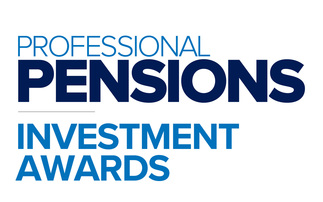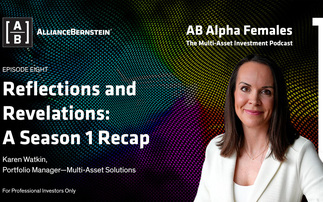
This article from Aviva Investors discusses the potential benefits of carbon removal strategies for institutional investors, through the lens of Aviva Investors’ Carbon Removal Fund’s investment approach, and its financial and sustainability objectives.
Reducing carbon emissions will not be enough to limit the global temperature rise to the Paris Agreement target of 1.5 degrees Celsius. We will also need to remove carbon dioxide from the atmosphere.*
For investors with net-zero ambitions, that means identifying and participating in high-quality strategies that remove carbon, like afforestation schemes or technological solutions (read more). The resulting certified carbon removal credits can then be bought and sold or used to offset emissions. But those strategies can also bolster portfolio resilience, providing transition-risk hedging.
The carbon credit market
Even in low-carbon economies, some residual emissions will remain, which should lead to greater demand for carbon credits. Alongside expectations of quality and limited supply, this will likely make high-quality carbon removal credits scarce and expensive.[1]
So, whether investors retire carbon credits to support net-zero targets or hold them as portfolio protection, they could benefit from price appreciation. And by financing emerging technologies, early investors can access innovation ahead of an expected increase in competition for these assets.
Net-zero obligations and portfolio resilience
When subscribing to Aviva Investors' Carbon Removal Fund (CRF), investors can keep the carbon credits and retire them at maturity, helping offset their emissions. This can be useful for those with net-zero targets, as the price of carbon, and therefore the cost of offsetting emissions, is expected to rise over time.
Alternatively, investors in the CRF can realise the value of their credits at maturity by selling them. For pension funds, this might make sense as a hedge to other investments whose value may be negatively impacted by rising carbon prices.
The CRF can provide hedges in three ways: it is positioned to perform in a climate scenario where carbon prices rise; it aims to capture other revenue streams like sustainably managed timber; and its investments in natural capital deliver diversification. For example, the value of timber is related to tree growth, not the fluctuations of global markets.
Investing for impact
Preserving natural assets also secures economic value through essentials like drinking water, energy, food, medicines and flood control (read more). For pension schemes, that means safeguarding a member's living standards in retirement can't be purely about financial returns. A depleted natural environment can erode both returns and quality of life, so real impacts matter too.
The CRF will focus on maximising carbon yields, but biodiversity and social considerations are at the heart of the projects in which it invests.[2] The fund aims to create habitats, and enhance soil and water quality (as well as reduce flood risk in project areas). It also seeks to deliver benefits to communities, by creating jobs in developed and emerging markets, stimulating local economies, and enhancing on-site facilities and public access.
A well-designed carbon removal strategy can generate value in a blended portfolio, while contributing to net-zero targets and social and biodiversity objectives.
Key risks
Investment risk: Investment values can fluctuate, and past performance is not indicative of future returns. Investors' capital is at risk
Policy and regulatory risks: changes in government policies, regulatory frameworks, and compliance requirements, which can impact project viability, funding, and long-term sustainability.
Delivery and counterparty risks: There are risks of delays or failures in delivering promised carbon removal services and the reliability of partners or stakeholders in fulfilling their contractual obligations.
Climate and physical risks: impacts of extreme weather events, changing climate conditions, and natural disasters, which can disrupt operations, damage projects and infrastructure, and affect the effectiveness of carbon removal processes.
Price and value risks: fluctuations in the market price of carbon credits and the uncertainty of the long-term economic value of the carbon removal project, which can affect project returns. The generation of carbon credits and positive returns from them are not guaranteed.
Technology and methodology risks: uncertainties and potential inaccuracies in the measurement, reporting, and verification processes, which can affect the credibility and effectiveness of the carbon removal outcomes.
Reversal and permanence risks: potential for sequestered carbon to be released back into the atmosphere due to factors like land-use changes, natural disturbances, or project failures.
Illiquidity risk: difficulty of selling an asset quickly if required without significantly impacting its price, which can limit financial flexibility and increase investment risk.
Emerging Markets Risks: Investments in emerging markets carry additional political, legal, and corporate governance risks compared to developed markets.
Investments in natural capital, private and venture capital, and other private market assets incur higher costs and expenses compared to public market assets. These costs are borne by the Fund and disclosed in the Private Placement Memorandum.
This summary highlights key risks but is not exhaustive. Investors should read the Private Placement Memorandum for a complete description of risks and conduct appropriate due diligence before making any investment decisions.
Important information
THIS IS A MARKETING COMMUNICATION DIRECTED SOLELY AT INVESTMENT PROFESSIONALS
Except where stated as otherwise, the source of all information is with the alternative investment fund manager, Aviva Investors Global Services Limited, as of January 2025. Unless stated otherwise, any views, opinions and expected returns expressed, are those of Aviva Investors and based on Aviva Investors internal forecasts. They should not be viewed as indicating any guarantee of return from an investment managed by Aviva Investors nor as advice of any nature. The value of an investment and any income from it may go down as well as up and the investor may not get back the original amount invested. Past performance is not a guide to future returns. The information within this document is based on our current understanding of taxation and is not to be construed as investment, legal or tax advice. The basis and rates of tax may change in the future. Some of the information within this document is based upon Aviva Investors estimates at the time of issuance. These should not be relied on by anyone else for the purpose of making investment decisions. Prospects should obtain and rely on their own examination of the Fund, prior to making an investment decision and it is advised that parties engage their own professional advisors. This document should not be taken as a recommendation or offer by anyone in any jurisdiction in which such an offer is not authorised or to any person to whom it is unlawful to make such an offer or solicitation.
Where relevant, information on our approach to the European Regulation 2019/2088 of the European Parliament and the Council of 27 November 2019 on sustainability-related disclosures in the financial services sector (the "SFDR Regulation") in Luxembourg on 10 March 2021, including policies and procedures can be found on the following link: https://www.avivainvestors.com/en-gb/capabilities/sustainable-finance-disclosure-regulation/ Aviva Investors Sustainable Outcomes SCSp SICAV-RAIF is a Luxembourg special limited partnership under the reserved alternative investment fund (fonds d'investissement alternatif réservé) regime within the meaning of the Luxembourg Law of 23 July 2016 ("RAIF Law"). The Fund itself being an alternative investment vehicle, is not regulated by the Luxembourg CSSF or any foreign regulatory authority, while its AIFM is regulated entity under the Luxembourg CSSF. As a consequence, Investors will not benefit from the same investment protection regime applicable to regulated Luxembourg collective investment schemes. Units are reserved to Institutional Investors and Well-Informed Investors who are aware of the risks attaching to an investment in a fund investing in direct or indirect interests in real estate. The Prospectus or Offering Memorandum (as relevant) of Aviva Investors funds are available together with the Report and Accounts free of charge by contacting us at the address below.
The AVIVA INVESTORS SUSTAINABLE OUTCOMES SCSp SICAV-RAIF consists currently one sub-fund: Aviva Investors Carbon Removals Fund. Aviva Investors Luxembourg, a Luxembourg public limited liability company (société anonyme) governed by and existing under the laws of the Grand Duchy of Luxembourg, having its registered office at 2, rue du Fort Bourbon, L-1249 Luxembourg, Grand Duchy of Luxembourg, and registered with the RCS under number B25708, has been appointed as the AIFM of the Fund. The AIFM is authorised and regulated by the CSSF (firm reference number A00000592).
Note for UK Investors in SICAV funds: This Fund is domiciled in Luxembourg and is authorised by the Commission de Surveillance du Secteur Financier (CSSF). The Fund is recognised in the UK under the Overseas Funds Regime but is not a UK-authorised Fund and therefore is not subject to UK sustainable investment labelling disclosure requirements. UK investors should be aware that they can make a complaint about the fund, its management company, or its depositary. However, complaints may not be eligible for resolution by the UK's Financial Ombudsman Service and any claims for losses related to the management company or depositary will not be covered by the Financial Services Compensation Scheme (FSCS). UK investors should consider seeking their own financial advice before making any decisions to invest and refer to the scheme prospectus for further information.
Issued by Aviva Investors Global Services Limited, registered in England and Wales No. 1151805. Registered Office: 80 Fenchurch Street, London, EC3M 4AE. Authorised and regulated by the Financial Conduct Authority.
775350 31/12/2025
[2] Social considerations will be variable for investments in Engineered Removals and Technology investments due to the nature of the underlying investments.
*Sixth Assessment Report", Intergovernmental Panel on Climate Change, 2022








